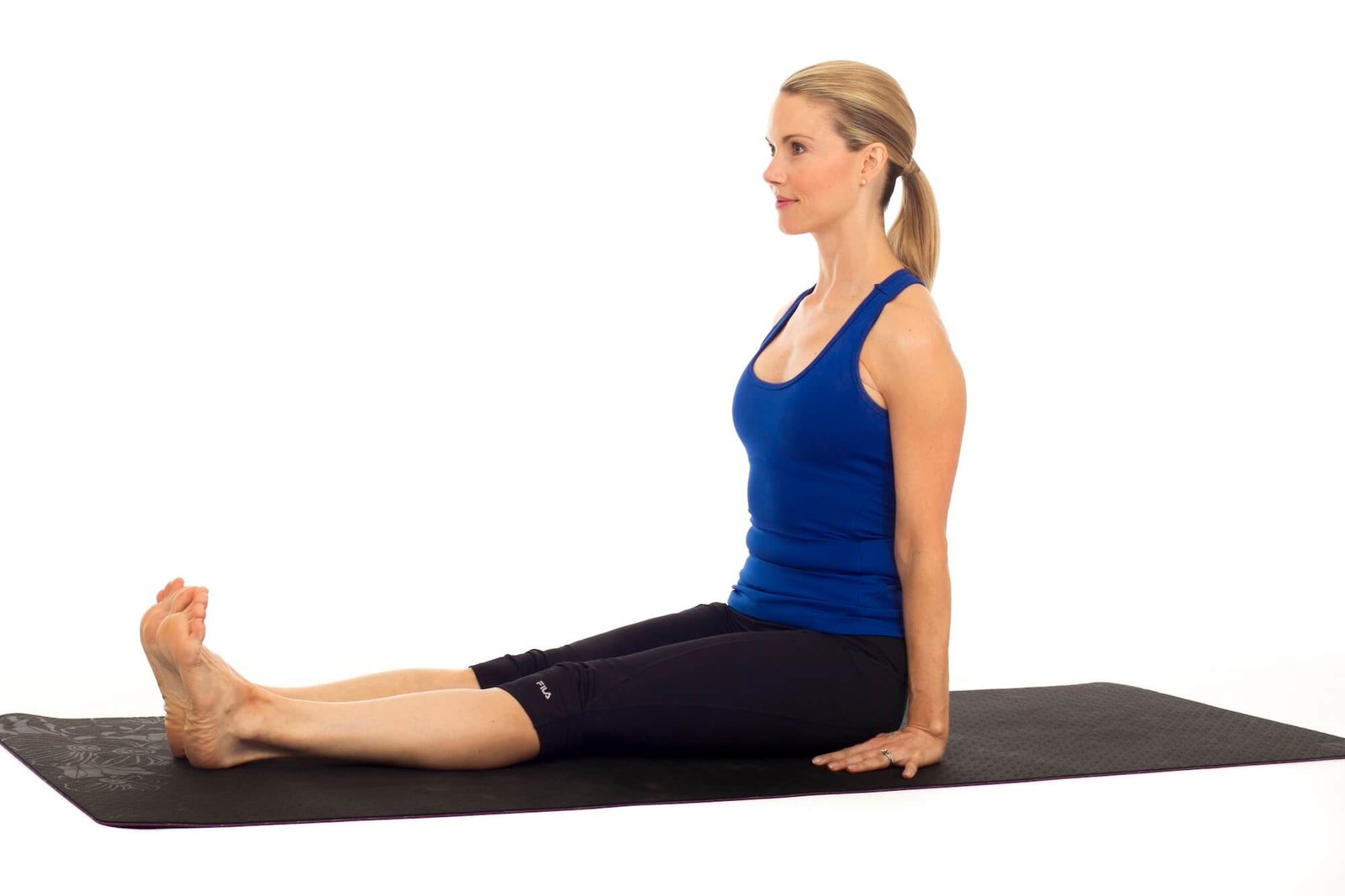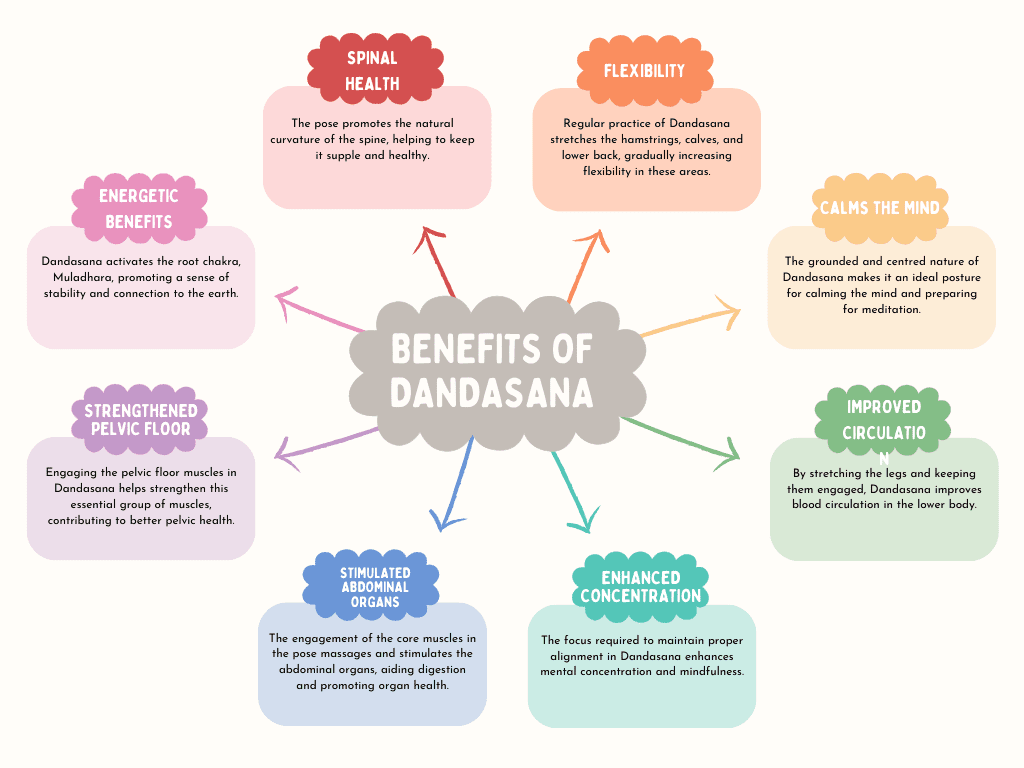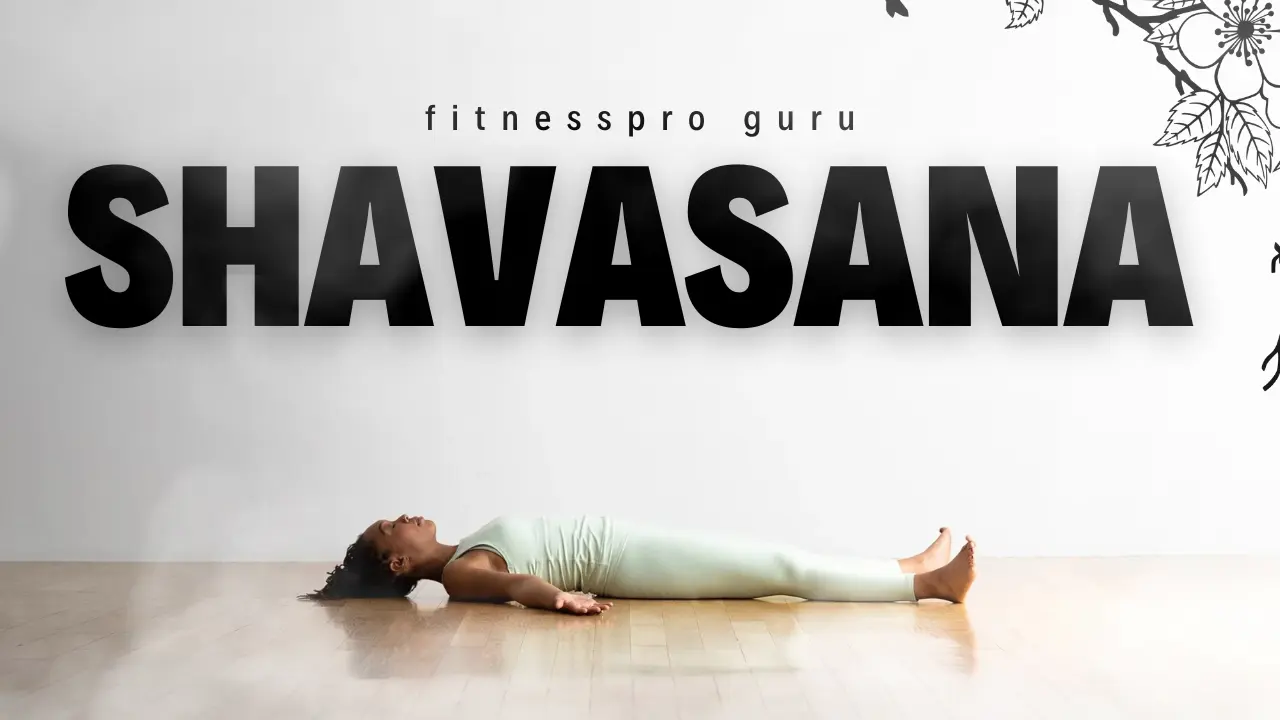
Introduction
“Dandasana, also recognized as the Staff Pose, stands as a fundamental cornerstone within the realm of seated yoga postures, serving as a crucial underpinning for an array of both seated and forward-bending poses. Despite its outward simplicity, the practice of Dandasana demands meticulous attention to alignment and holistic bodily involvement. Functioning as a dependable foundation, this seated asana not only facilitates meditation and pranayama (breath regulation) but also lays the groundwork for various other seated disciplines. Through the dedicated honing of Dandasana’s alignment, practitioners can nurture not only stability and a rooted sense of being but also an elevated consciousness regarding their bodily posture.”
How to do Adho Mukha Svanasana its benefits and precautions
The Shape of Dandasana
“In this posture, the body stands upright, with the legs fully extended in front of the torso, creating a striking staff-like contour. Simultaneously, the spine achieves a lengthened position, allowing for a sense of elongation, while the shoulders remain in a state of relaxation. Adjacently, the palms find their place on the floor beside the hips, further enhancing the alignment and balance of the pose.”
Practising Dandasana
While Dandasana may appear simple, it offers numerous benefits and requires attention to detail for proper execution.
Precautions:
- “If you find yourself dealing with a lower back injury or any medical condition impacting the spine or hamstrings, it’s essential to reach out to a certified yoga instructor or healthcare expert prior to embarking on Dandasana. Ensuring your safety and well-being, these professionals can offer guidance tailored to your individual needs.”
Step-by-Step Instructions:
- Starting Position:
- Sit on the floor with your legs extended straight in front of you.
- Place your hands on the floor beside your hips, fingers pointing forward.
- Grounding the Legs:
- Press your thighs and knees firmly into the floor.
- Flex your feet, pointing your toes towards the ceiling.
- Ensure that your legs are engaged and active throughout the pose.
- Aligning the Spine:
- Lengthen your spine upward, imagining your head reaching towards the ceiling.
- Keep your back straight and avoid rounding or arching the spine.
- Engage your core muscles to support the lengthening of the spine.
- Relaxing the Shoulders:
- Soften your shoulders and draw them away from your ears.
- Broaden your collarbones and open the chest.
- Allow your shoulder blades to gently press against your back.
- Positioning the Hands:
- Keep your palms flat on the floor beside your hips, fingers pointing forward.
- Press down through the palms to lift the chest slightly.
- Gazing Point:
- Direct your gaze forward, fixing your eyes on a point in front of you.
- Maintain a soft and steady gaze throughout the pose.
- Breathing Mindfully:
- Take deep and steady breaths while maintaining the pose.
- Inhale to lengthen the spine, and exhale to relax and ground the body.
- Holding the Pose:
- Hold Dandasana for 30 seconds to 1 minute, or as long as you are comfortable.
- With regular practice, gradually increase the duration.
Modifications:
- If you have tight hamstrings and cannot sit with your legs extended, you can place a folded blanket or cushion under your hips for support.
- If your hamstrings are very tight, you can bend your knees slightly to make the pose more accessible.
Benefits of Dandasana

Here are the key benefits of practising Dandasana:
1. Improved Posture: Dandasana encourages an upright and aligned posture, strengthening the muscles of the back and core and reducing the tendency to slouch.
2. Spinal Health: The pose promotes the natural curvature of the spine, helping to keep it supple and healthy.
3. Flexibility: Regular practice of Dandasana stretches the hamstrings, calves, and lower back, gradually increasing flexibility in these areas.
4. Strengthened Pelvic Floor: Engaging the pelvic floor muscles in Dandasana helps strengthen this essential group of muscles, contributing to better pelvic health.
5. Stimulated Abdominal Organs: The engagement of the core muscles in the pose massages and stimulates the abdominal organs, aiding digestion and promoting organ health.
6. Grounding and Stability: Dandasana provides a stable base for other seated poses and practices, fostering a sense of grounding and stability.
7. Enhanced Concentration: The focus required to maintain proper alignment in Dandasana enhances mental concentration and mindfulness.
8. Preparation for Seated Practices: Dandasana serves as a preparatory pose for various seated poses, including forward bends and twists.
9. Calms the Mind: The grounded and centred nature of Dandasana makes it an ideal posture for calming the mind and preparing for meditation.
10. Improved Circulation: By stretching the legs and keeping them engaged, Dandasana improves blood circulation in the lower body.
11. Energetic Benefits: Dandasana activates the root chakra, Muladhara, promoting a sense of stability and connection to the earth.
12. Better Sitting Alignment: Regular practice of it translates into improved sitting alignment in daily life, supporting back health during prolonged sitting.
13. Therapeutic for Sciatica: The stretching and engagement of the back and leg muscles in Dandasana can provide relief from mild sciatica discomfort.
14. Encourages Mind-Body Connection: The alignment-focused approach to Dandasana fosters a deeper mind-body connection and self-awareness.
15. Prepares for Pranayama: It is often used as a starting position for pranayama (breath control) practices, facilitating optimal breathing.
Conclusion
Dandasana, also known as the Staff Pose, stands as a straightforward yet profoundly influential seated yoga posture, encompassing a myriad of advantages. Through consistent integration of Dandasana into your routine, you can refine your posture, foster suppleness within the legs and lower back, and cultivate an augmented sensation of rootedness and equilibrium. This elemental stance not only acts as a threshold to delve into more profound seated disciplines but also facilitates the voyage towards meditation and mindful breathwork. It is imperative to approach the practice of Dandasana with a keen cognizance and a profound appreciation for the capabilities of your body, making necessary adaptations to suit your prevailing flexibility level. By seamlessly incorporating Dandasana into your yoga regimen, you can bear witness to the transformative outcomes of this foundational seated pose, embellishing both your corporeal and emotional wellness.”




